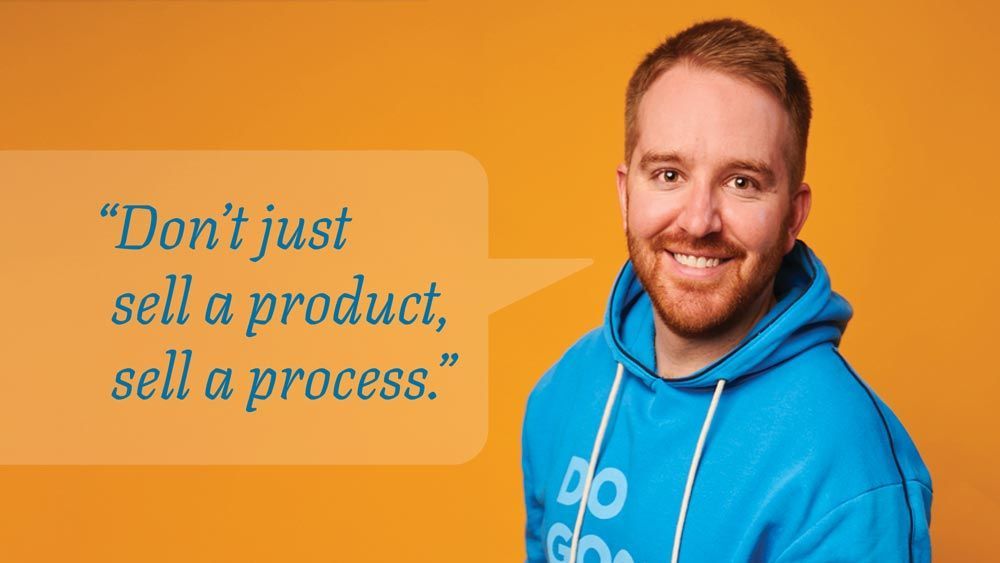Education to Business Strategy for Colleges and Universities
Higher education doesn’t always know how to talk to business, and business doesn’t know how to talk to higher education.
At a technology transfer task force meeting, I heard an excellent observation: “We can have the best programs for technology transfer and commercialization, but we can be in a room filled with business and industry and none of them will have heard of the programs, what they do or that they exist.”
In essence, the observer’s comments were, “Higher education doesn’t always know how to talk to business, and business doesn’t know how to talk to higher education. Sometimes they don’t even know they’re in the same room.”
Why is this the situation? In our experience of over twenty years of creating design communications for education to business initiatives (E2B), the key issue has always been one of focused communication. Unfocused communication can be the result of mission creep at the institutional level, leading to lack of focus in marketing and outreach. Mission creep may not be avoidable, but it can be manageable.
Messaging may also be diluted by unsustainable communication initiatives that are sidelined by shifting priorities at the institutional level.
First, it’s a communications issue:
When a college or university is trying to engage the business community, it has to be focused. Laser-like focus. There must be a sustained and deliberate commitment to telling an effective story with the voice of the institution.
To engage the business community, it requires marketing that includes more direct communications touch points. In the past, traditional media marketing may have been effective (business magazines and the local/regional newspaper business pages) – but communication must include Twitter, LinkedIn, and other online platforms (where the content that entrepreneurs and business owners are looking for should be curated). It’s sharing information on specialized market niche web sites that serve a specific vertical industry.
It’s by contributing to Quora and being recognized as an expert in an industry segment in order to gain credibility. It’s by participating and engaging the businesses and entrepreneurs where they are – in their networks, in their LinkedIn groups, in their associations. Mobile media is the fastest-growing delivery medium for engagement and communications: what is your strategy to address it?
Second, speak the same language:
Broad-based messaging, unless it is simply to build awareness, is not an effective method of engaging the business community.
The key is focused messaging, delivered in the same language that business speaks. Read Fast Company or Entrepreneur or Forbes magazine; the flavor and tone of writers who are speaking the language of business everyday. Educators speak the language of academia; the marketing department and the program communications need to be the bridge, the translators, and speak the language of business.
Industry terms as identified in curriculum (or within a program that is developed internally at an institution) are not always current (or the usage has evolved), especially with the rapid pace of technological advancement and the conversations around those advances. Innovation happens at a kickstarter.com pace — rapidly and enthusiastically — whereas on the institutional level, adapting to industry changes and communicating to those changes occurs at a pace that just can’t keep up, or attempts to communicate in terms that are curriculum-specific and not industry-specific.
With the array of engagement tools that are available to an E2B program — whether it’s an incubator, business services or special programs helping to accelerate technology transfer — the program needs to be on the leading edge of engagement and not on the trailing.
Third, don’t dilute the message
An institution’s messaging becomes more diluted as it tries to demonstrate relevance of an institution’s service offerings in its communication, when it should remain focused and communicate what is of relevance to the specific audience targeted in the messaging.
A quick check for broad spectrum, unfocused messaging is: if there is more about the institution in the communications — whether it’s an ad, an email outreach or another form of electronic or traditional media — than there is “what’s in it for the audience,” (The benefit or “what’s in it for me?”) then the messaging is not focused enough and will not be effective in communicating with a business or entrepreneur audience. It’s tough to hear, but it’s not about the organization!
Fourth, create one point of contact
Institutions tend to create multiple layers of and pathways to programs (funded by grants and other funding mechanisms), that by their nature create multiple and confusing entry points for business and entrepreneurs who are looking for help and looking to engage the institution.
A single point of contact — a single, high-profile program or office, with a widely recognized community leader or ambassador — will be the most effective engagement point for the business community. Start from a single point of contact, and resist the institutional urge to create multiple paths. At a certain point, multiple paths will even cause confusion internally, and will certainly create obstacles to effective and clear business community engagement.
It’s time to pivot
If the goal is to engage the business community, college and university communications to that audience will benefit from a pivot. Stop how you’re communicating, and ask the business community how to best communicate with them, without institutional bias — and then do it. Think about consumer experience (ie the businesses and entrepreneurs you want to reach) — and then build your outreach around it.
If you’re courageous in doing this, you may succeed brilliantly — or you may fail spectacularly. If you fail, you’ll have the insight of what doesn’t work — the same insights that many entrepreneurs gain daily, and share more in common with them than ever before. You’ll gain one more opportunity to engage with and have meaningful conversation with the business community.
Do you have a hard time explaining what your company does or why your brand matters to people?
If you struggle to grow your business, you’re not alone. Aespire can help you create a clear message and brand that helps you grow your business. Contact us today for a consultation with a StoryBrand Certified Marketing Guide.
Get a Free Comprehensive Marketing Assessment
Stop hoping your marketing will sort itself out.
- Complete this free assessment in 15 minutes.
- Review your custom report (and schedule a 30-minute review) to diagnose what’s happening.
- Create an action plan to get your marketing back on track.







